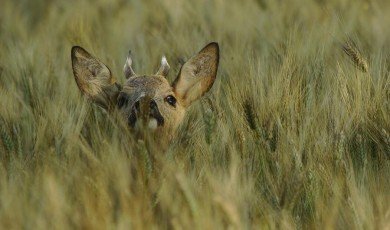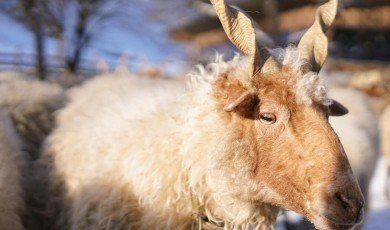As technology reshapes every industry, the world of animal care is evolving faster than ever before. From veterinary clinics and shelters to farms and wildlife conservation projects, digital solutions are helping professionals make smarter, faster, and more humane decisions. What was once manual, time-consuming, and reactive is becoming data-driven, proactive, and deeply aligned with environmental and ethical goals.
At the heart of this transformation are intelligent systems that extract insights from data and automate routine tasks. These platforms streamline operations, support accurate diagnoses, and help organizations reduce waste while improving animal well-being. With the right AI automation tools, teams can unlock new levels of efficiency, achieve more consistent care standards, and free up time to focus on what truly matters: the health and safety of animals.
1. Predictive Health Monitoring for Early Intervention
One of the most powerful applications of intelligent technology in animal care is predictive health monitoring. By analyzing patterns in behavior, movement, appetite, and vital signs, algorithms can detect subtle changes long before they become visible to humans. This enables early intervention, which reduces suffering, improves survival rates, and lowers treatment costs.
In farms, wearable sensors on livestock can track temperature, activity, and feeding behavior in real time. When the system flags anomalies—such as reduced movement or appetite—it can alert caretakers immediately. In companion animals, smart collars and connected devices can monitor heart rate variability, sleep quality, and even stress indicators, generating alerts when a pet may need veterinary attention.
This early-warning capability prevents disease outbreaks, reduces the need for emergency treatments, and supports a more sustainable use of medicines and resources. Instead of treating large groups preemptively or reacting only when symptoms become serious, caretakers can make targeted, data-informed decisions.
2. Optimized Feeding and Resource Management
Intelligent systems are transforming how food, water, and supplements are distributed in both domestic and agricultural settings. By analyzing historical data, growth patterns, and environmental conditions, these tools recommend or automatically adjust feeding schedules and quantities.
For example, advanced feeders can dispense precise amounts of food based on an individual animal’s age, weight, and activity level. This prevents overfeeding, minimizes waste, and reduces the environmental impact associated with producing excess feed. In larger operations, algorithms can coordinate feed distribution to entire herds or flocks, ensuring more consistent nutrition and lower spoilage rates.
Better resource management also extends to water usage, bedding, and energy. Smart systems can adjust lighting, temperature, and ventilation to meet animals’ comfort needs without overusing electricity or heating. The result is a healthier environment for animals and a smaller ecological footprint for the facility.
3. Automated Behavior Analysis for Welfare Assessment
Assessing animal welfare can be subjective and labor-intensive. Intelligent video analytics are changing this by providing consistent, objective measurements of behavior across time and space. Cameras combined with image recognition algorithms can track posture, social interactions, and activity levels automatically.
In shelters, such systems can identify signs of stress, fear, or aggression, helping staff adjust housing conditions, enrichment strategies, or socialization approaches. In farms, they can detect lameness, overcrowding, or abnormal group behavior that may indicate pain or discomfort. Wildlife conservation projects use similar technology to study species in their natural habitats without intrusive human presence.
By translating observed behavior into data, organizations can benchmark welfare standards, track improvements, and make evidence-based changes to housing designs, enrichment programs, and caregiving protocols.
4. Smarter Clinical Decision Support for Veterinarians
Veterinary teams are under increasing pressure to deliver accurate diagnoses quickly while balancing costs and client expectations. Intelligent decision-support tools assist by analyzing medical records, lab results, imaging data, and symptoms to suggest likely diagnoses or treatment options.
These systems never replace the clinical judgment of a veterinarian; instead, they function as an extra pair of highly data-literate eyes. By cross-referencing similar past cases and medical literature, they can highlight uncommon conditions, flag potential drug interactions, and suggest optimized treatment plans tailored to each animal.
Over time, this leads to more consistent care, fewer diagnostic errors, and reduced reliance on unnecessary procedures or medications. With better-informed decisions, clinics can treat animals more effectively while keeping resource use manageable.
5. Streamlined Shelter and Rescue Operations
Animal shelters and rescue organizations often operate with limited budgets and overextended staff. Intelligent automation can relieve some of this pressure by handling repetitive tasks such as scheduling, intake processing, and data entry.
Systems can automatically match animals with potential adopters based on lifestyle, housing conditions, and prior pet experience. They can prioritize medical checkups, vaccinations, and behavioral assessments based on risk and urgency. Communication workflows—such as follow-ups after adoption, reminders for vaccinations, or updates to foster families—can be automated while still feeling personalized.
This level of operational efficiency allows shelter staff and volunteers to focus on high-touch activities like behavior training, human–animal bonding, and community outreach. As a result, more animals receive the attention they need, adoption rates can increase, and long-term outcomes improve.
6. Enhanced Biosecurity and Disease Control
Disease outbreaks can be devastating in both farm and wildlife settings. Intelligent surveillance systems monitor trends across locations, identifying unusual clusters of symptoms or deaths earlier than traditional methods. Integration with environmental and geographic data helps trace the likely source and path of spread.
When anomalies are detected, automated alerts can be sent to veterinarians, farm managers, or regulatory bodies. Response plans—such as isolation measures, testing protocols, or vaccination campaigns—can be triggered more rapidly, limiting the scale of the outbreak.
This proactive approach protects animal populations, safeguards food supply chains, and reduces reliance on mass medication strategies, which can contribute to antibiotic resistance and other long-term sustainability challenges.
7. Data-Driven Breeding and Genetic Management
Breeding decisions in farms, conservation programs, and specialized animal facilities have historically relied on experience and limited data. Intelligent analytics are now enabling more advanced, ethically aligned strategies that prioritize health, genetic diversity, and resilience.
By analyzing lineage, health histories, and performance or behavioral traits, systems can help identify pairings that reduce the risk of inherited diseases while preserving or enhancing desired characteristics. Conservation projects use similar methods to maintain genetic diversity in endangered species, which is critical for long-term adaptability and survival.
Over time, such informed breeding practices can create populations that are naturally healthier and more resilient, reducing the need for medical interventions and lowering overall resource consumption.
8. Education and Remote Support for Caregivers
Not every caregiver or animal owner has immediate access to specialists, especially in remote or underserved regions. Intelligent platforms can provide on-demand guidance through chat interfaces, virtual consultations, or adaptive learning modules tailored to different experience levels.
These systems can walk new pet owners through best practices in nutrition, enrichment, and preventive care, or assist farmers in implementing humane handling and housing protocols. For field conservationists, they can provide quick references on species identification, behavior, and emergency interventions.
By democratizing access to expert-level support, these tools help raise the overall standard of animal care, reducing preventable suffering and improving long-term welfare outcomes across diverse contexts.
Conclusion: Technology as a Partner in Responsible Animal Care
Intelligent automation and data analysis are reshaping how societies care for animals, from individual pets to entire species. By enabling early detection of health issues, optimizing resource use, and supporting more informed decisions, these systems align animal welfare goals with environmental and economic sustainability.
The future of responsible animal care depends on adopting tools that enhance human expertise rather than replace it. Organizations that integrate these solutions thoughtfully can provide more compassionate, consistent, and efficient care while reducing waste and environmental impact. As these technologies continue to advance, they offer a powerful opportunity to build a world where animal well-being and sustainability are not competing goals, but mutually reinforcing priorities.







